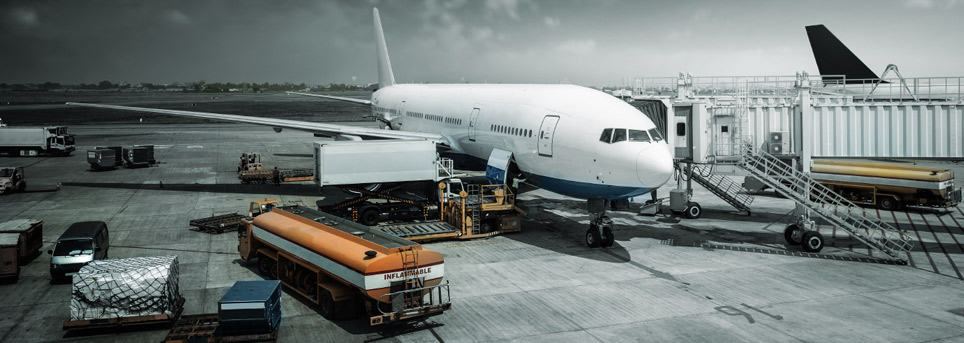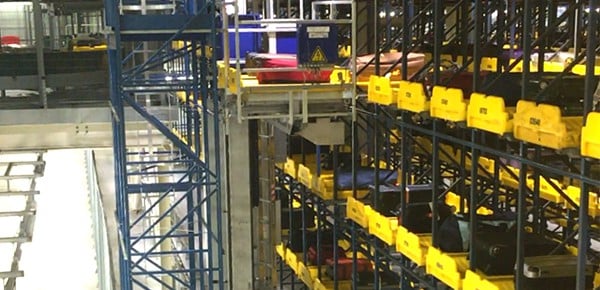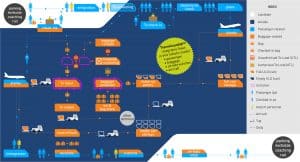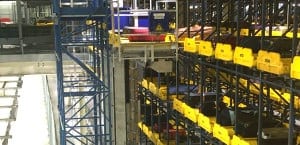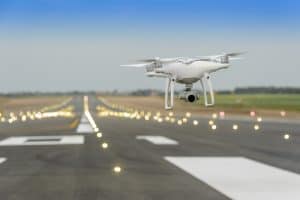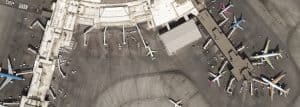
We have been working with airports for many years increasing capacity using the airport’s existing infrastructure and resources. Making small changes to layout or queue management or working patterns can have a large impact on the overall system. So often ‘working the asset’ more efficiently can delay the need to upgrade it or replace it. This is a more cost effective and lower risk approach to increasing airport capacity.
Airport Demand Forecasting and Management
The rise of self-service check in and baggage handling technologies has changed the rhythms of an airport. Demand forecasting and management is therefore crucial to efficient use of capacity. Working closely with airports to better understand their existing and potential capacity, spreading demand peaks and supporting their decision-making.
Airport demand forecasting is a key AiQ service. We have developed software tools to generate and forecast future annual and peak hour traffic for airports, using regression analysis, a more accurate and realistic method than trend forecasts. It predicts traffic using additional variables that could influence statistics, such as GDP, exchange rate, fuel price, unemployment figures, and much more. It tells us which variables affect the traffic and how, in a much more robust, holistic approach. We can then efficiently use and apply this scientific methodology, creating scenario forecasting models that make future airports aware of change and able to adapt to it.
Airport Capacity Planning
Our approach to airport capacity planning is based on IATA standards, to provide optimum passenger experience. Our updated IATA Tool is a development of our existing IATA software using the new LoS requirements with sections covering processes from check-in desks and security lanes to emigration. Using IATA standards, we believe our clients can not only understand how their future airport will comply with the guidance, but it also allows us to highlight capacity and operational efficiency improvements.
We can tell airports the optimum space required per passenger at all processes and optimum waiting time per passenger at each process, a valuable device in order to understand how their airport is working and what can be done to improve it, whilst retaining existing infrastructure and resources.
Modelling Simulations
Mathematical modelling and simulations can be a massive advantage to airports wishing to increase capacity whilst using existing infrastructure and resources. Through our bespoke modelling tool, TransvisionAiR™, our AiQ team uses modelling and simulations to find out, for example, how large airport check in areas should be, whether passengers are travelling through departures in an acceptable amount of time, and if arrivals procedures are up to scratch.
The flow of passengers is critical to the success of an airport. This flow interconnects with airport operational efficiency and management, and therefore realising capacity. We use typical human behaviour in all passengers for our simulations to focus on how passengers are moving realistically through the airport. This allows us to understand how they move and therefore how to improve both their experience and the use of airport capacity.
Crucially we have a range of methods to report the results. Every project has a different treatment. The simulation output may be a simple pivot graph in a spreadsheet, a minimal 2D model or a fully realised Virtual Reality 3D simulation. The scale of the model is dependent on the scale of the decision to be made.
Understanding the options allows better management decisions, better cost benefit analysis and it reduces risk, keeping the stakeholders engaged.
Innovation
Using operational and technological innovations also has its part to play in improving airport capacity. Airports are investing more and more into new technologies that enhance and improve the passenger journey, and for good reason. Not only can these new technologies increase efficiency, but passengers also have now come to expect these types of technology in their daily lives. For example, the introduction of bio metric security can reduce congestion and improve passenger flow whilst self service bag drop and early bag stores allow passengers more flexibility about when and where they check in.
We invest in both our knowledge and application of these new technologies, including Autonomous Electric Vehicles, Self Service check-in, Robotic Baggage Build, Self Service Bag Drop & Early Bag Stores and more, in order to understand the implications for airport capacity for the installation and use of such new innovations throughout airports.
If you wish to increase airport capacity through efficient use of existing airport infrastructure and resources, take a look at our case studies to find out more about our approach, or contact us today to talk about our services.


